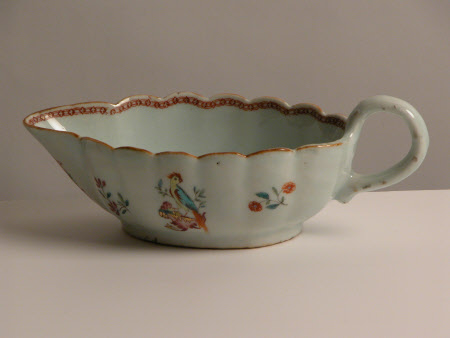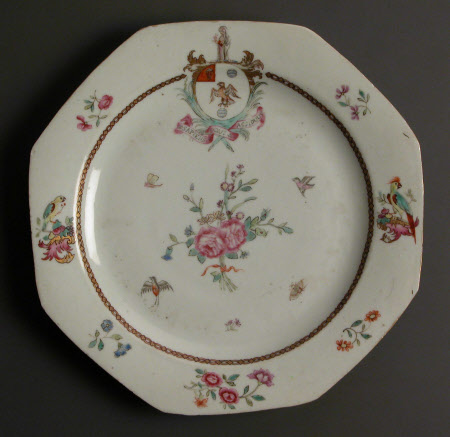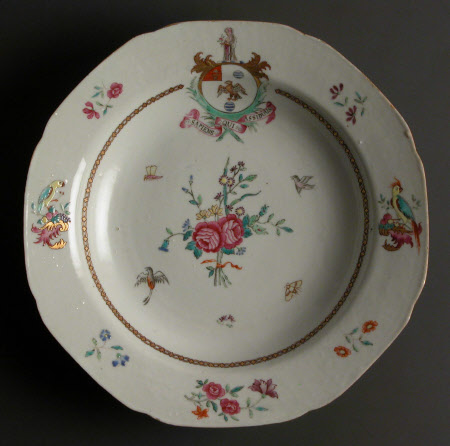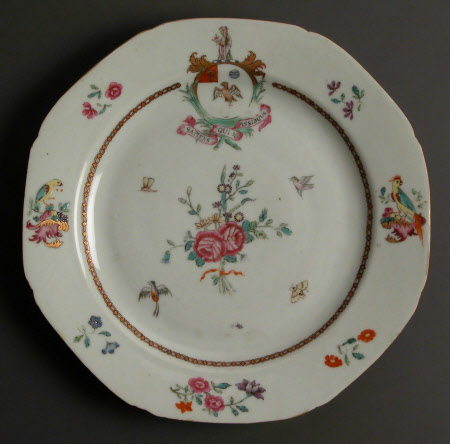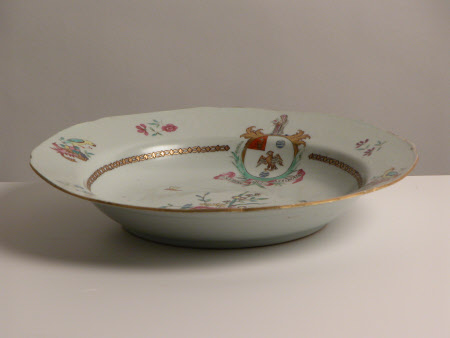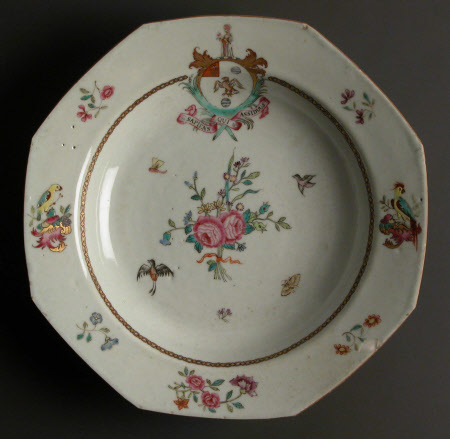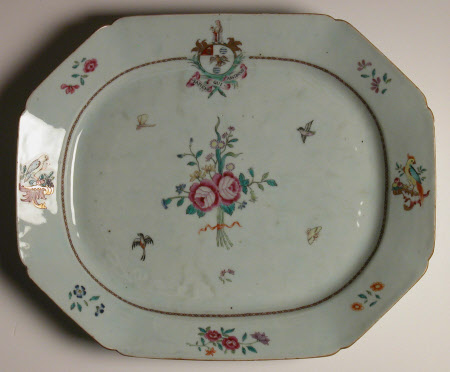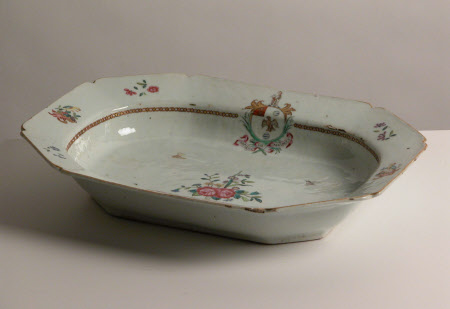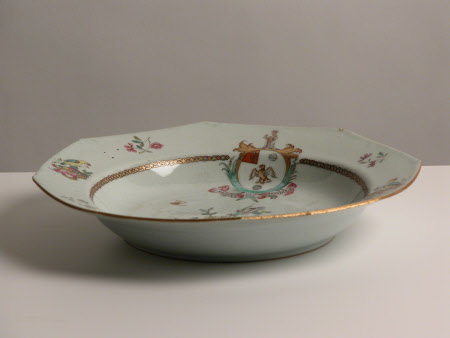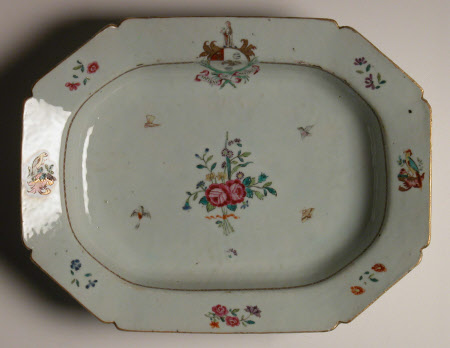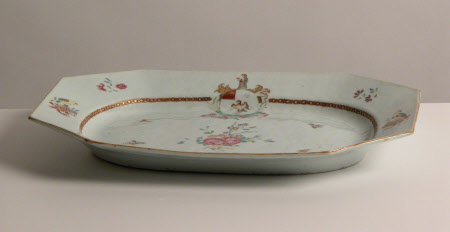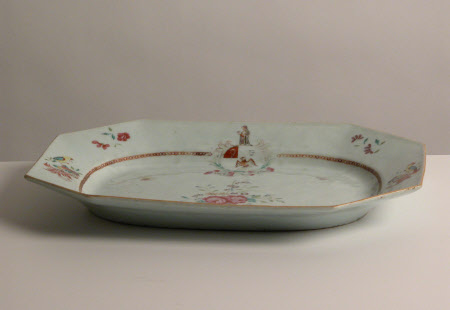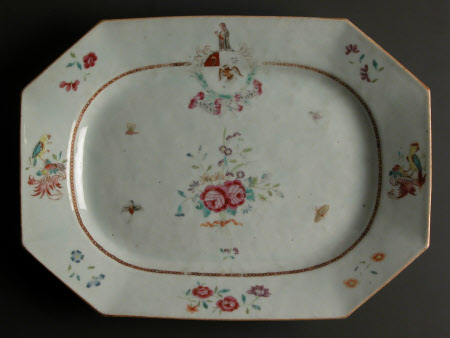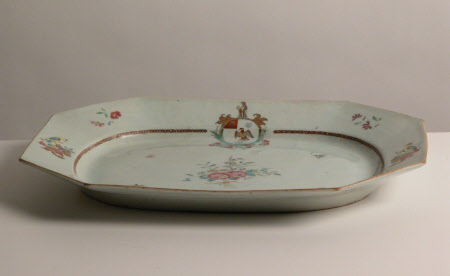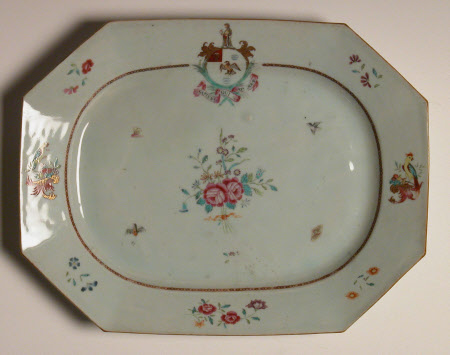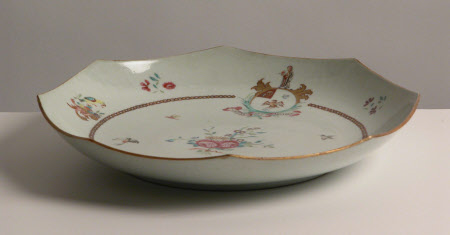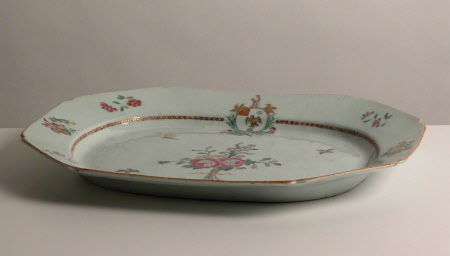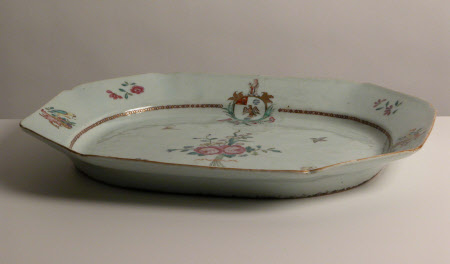Part dinner service
Category
Ceramics
Date
1765 - 1770
Materials
Hard-paste porcelain, gilt
Measurements
60 x 97 mm; 200 mm (Length)
Place of origin
Jingdezhen
Order this imageCollection
Basildon Park, Berkshire
NT 266484
Summary
Hard paste porcelain part Dinner Service in famille rose enamels with the coat of arms of Sykes of Basildon Park. Made in Jingdezhen China and decorated at Canton (modern-day Guangzhou), China, c.1765-70 for Sir Francis Sykes. Service consists of 2 sauce boats, 1 tureen with stand and cover, 5 serving dishes, 19 plates and 12 soup plates.
Full description
Sir Francis Sykes, the builder of Basildon Park in Berkshire, made his substantial fortune during his service with the East India Company in Bengal, where he worked closely with Robert Clive to help the company establish its control over the local administration and economy. He was also actively involved in many acts of private trading which allowed him to amass his own fortune which was then spent on the construction of his new home at Basildon, as well as furnishing it. His expenditure included the acquisition of this armorial porcelain dinner service. This would have been a complex process and the two styles of plates, some with scalloped edges, and others with cut edges suggest that Sykes have had to purchase them over two commissions. His ability to do so would have relied on his position in the East India Company. He may have commissioned them while still based in India, taking advantage of the local trade with China. Or ,it may have occurred when he returned to England, through English traders to China. Whichever process Sykes used, his agent would have provided a copy of his family coat of arms to decorators based in Canton (modern-day Guangzhou), who would decorate pieces originally made and fired in Jingdezhen, China. Sykes' coat of arms, granted in 1763 emphasised his meteoric rise from humble beginnings as a merchant and East India Company official in Bengal and India. It features an eagle between three sykes (a heraldic fountain), along with a depiction of the caduceus (associated with the Greek god Hermes, but also a symbol of merchants) on a red square. Above this was a helmet or crest, and then above this was a profile image of a woman in a head scarf holding a rose. This was formally described as a 'demy lady of Bengal in the compleat dress of that kingdom, holding in the dexter hand a rose'. Below was the Latin motto which Sykes, adopted, 'Sapiens qui Assiduus' (He is wise who is industrious). By commissioning this service, he was marking his formal entry into the upper echelons of English society, a position which was further established with his award of a baronetcy in 1781. The expense of this service, along with its display of the family coat of arms made it an important dynastic symbol to be passed on down through generations and a display of family progress and success. However, the excessive spending of later generations of the Sykes family led to serious financial difficulties, and the sale of Basildon Park in 1838. It is probable that the service was dispersed to pay debts after this period, and its now only partial survival reflects the later fortunes of the family.
Provenance
Commissioned by Sir Francis Sykes around 1765-1770 and presumably by family descent until dispersed. Majority of the part service purchased by the National Trust from Heirloom & Howard, London, with support from the Art Fund and Edward Langton, 2nd Lord Iliffe and National Trust Associations, 1987.
References
Smith 2018: Kate Smith, 'Manly Objects? Gendering Armorial Porcelain Wares' in Margot Finn and Kate Smith (eds.), The East India Company at Home, 1757-1857. London, 2018, pp.113-130. Sykes 2019: John Sykes, The Nabob; The Life of Sir Francis Sykes, Marlborough, 2019
